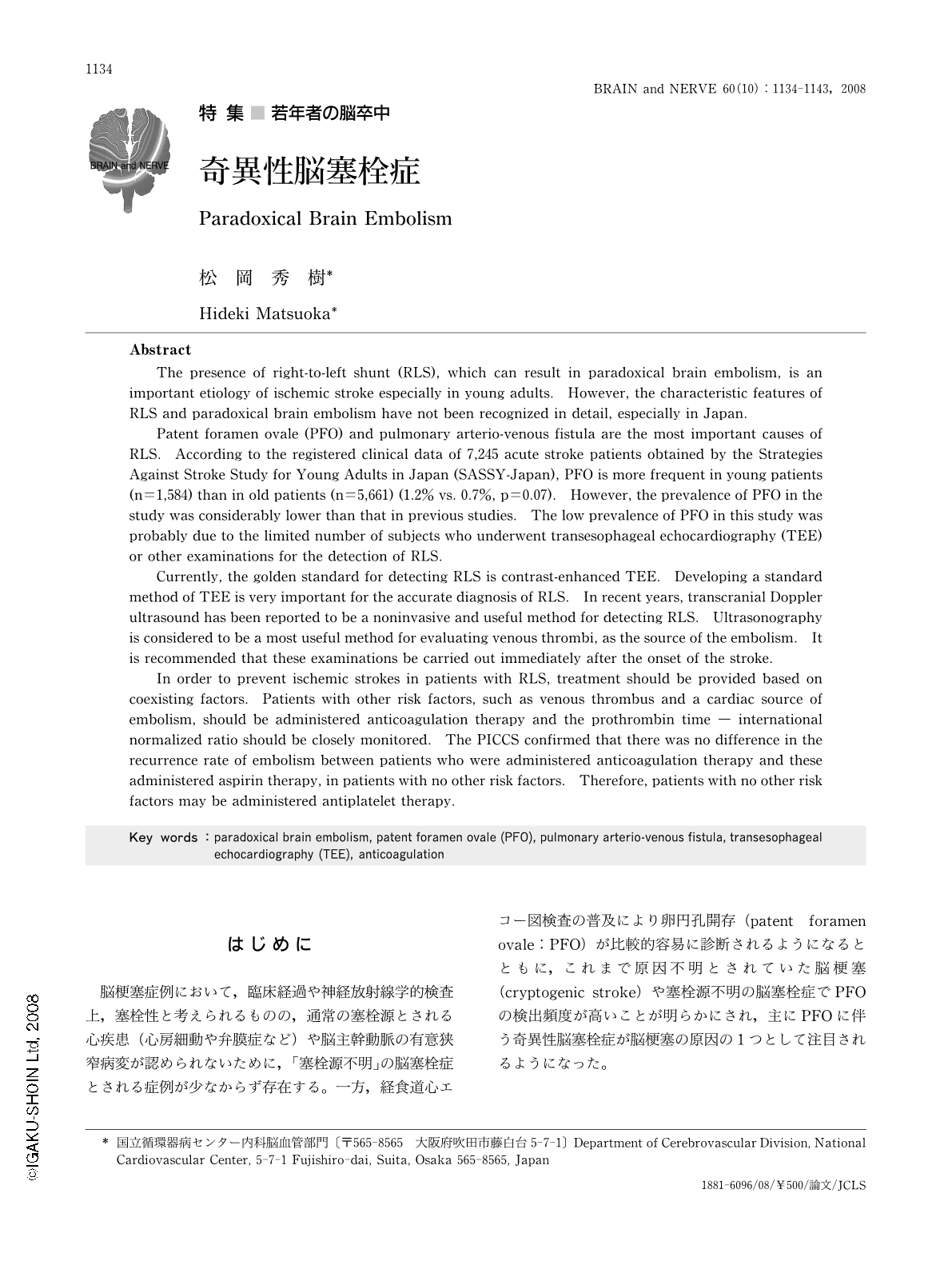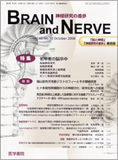Japanese
English
- 有料閲覧
- Abstract 文献概要
- 1ページ目 Look Inside
- 参考文献 Reference
はじめに
脳梗塞症例において,臨床経過や神経放射線学的検査上,塞栓性と考えられるものの,通常の塞栓源とされる心疾患(心房細動や弁膜症など)や脳主幹動脈の有意狭窄病変が認められないために,「塞栓源不明」の脳塞栓症とされる症例が少なからず存在する。一方,経食道心エコー図検査の普及により卵円孔開存(patent foramen ovale:PFO)が比較的容易に診断されるようになるとともに,これまで原因不明とされていた脳梗塞(cryptogenic stroke)や塞栓源不明の脳塞栓症でPFOの検出頻度が高いことが明らかにされ,主にPFOに伴う奇異性脳塞栓症が脳梗塞の原因の1つとして注目されるようになった。
Abstract
The presence of right-to-left shunt (RLS),which can result in paradoxical brain embolism,is an important etiology of ischemic stroke especially in young adults. However,the characteristic features of RLS and paradoxical brain embolism have not been recognized in detail,especially in Japan.
Patent foramen ovale (PFO) and pulmonary arterio-venous fistula are the most important causes of RLS. According to the registered clinical data of 7,245 acute stroke patients obtained by the Strategies Against Stroke Study for Young Adults in Japan (SASSY-Japan),PFO is more frequent in young patients (n=1,584) than in old patients (n=5,661) (1.2% vs. 0.7%,p=0.07). However,the prevalence of PFO in the study was considerably lower than that in previous studies. The low prevalence of PFO in this study was probably due to the limited number of subjects who underwent transesophageal echocardiography (TEE) or other examinations for the detection of RLS.
Currently,the golden standard for detecting RLS is contrast-enhanced TEE. Developing a standard method of TEE is very important for the accurate diagnosis of RLS. In recent years,transcranial Doppler ultrasound has been reported to be a noninvasive and useful method for detecting RLS. Ultrasonography is considered to be a most useful method for evaluating venous thrombi,as the source of the embolism. It is recommended that these examinations be carried out immediately after the onset of the stroke.
In order to prevent ischemic strokes in patients with RLS,treatment should be provided based on coexisting factors. Patients with other risk factors,such as venous thrombus and a cardiac source of embolism,should be administered anticoagulation therapy and the prothrombin time ― international normalized ratio should be closely monitored. The PICCS confirmed that there was no difference in the recurrence rate of embolism between patients who were administered anticoagulation therapy and these administered aspirin therapy,in patients with no other risk factors. Therefore,patients with no other risk factors may be administered antiplatelet therapy.

Copyright © 2008, Igaku-Shoin Ltd. All rights reserved.


